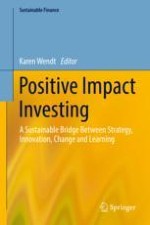2018 | OriginalPaper | Buchkapitel
Investments for Development in Switzerland: A Sub-type of Impact Investing with Strong Growth Dynamics
verfasst von : Julia Meyer, Kelly Hess
Erschienen in: Positive Impact Investing
Aktivieren Sie unsere intelligente Suche, um passende Fachinhalte oder Patente zu finden.
Wählen Sie Textabschnitte aus um mit Künstlicher Intelligenz passenden Patente zu finden. powered by
Markieren Sie Textabschnitte, um KI-gestützt weitere passende Inhalte zu finden. powered by
